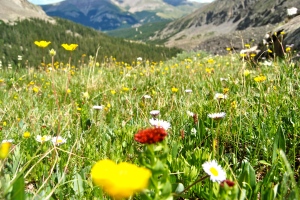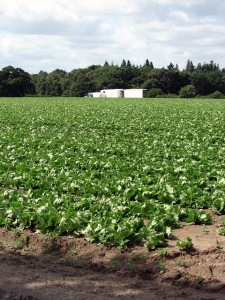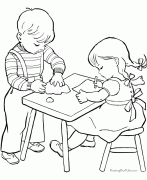I’ve been thinking a lot about Virginia Eubank’s statement that a more just society requires that we begin treating difference as a resource. This is a more succinct rephrasing of something I’ve been saying for some time – diversity is not just a nicety, it’s a necessity. This past week I finished Aldo Leopold’s “A Sand County Almanac”. At the end of the book he talks about a land ethic, pointing out that all ethics so far conceived share a common core that recognizes we (and to Leopold we includes humans, soil, plants, animals, etc.) are a community of interdependent parts.

Consider the wildflower meadow that has grown for ages as a self-renewing ecosystem. It can do so because difference provides it with everything needed to be healthy. Rodents, birds, insects, wind, rain, and fire – each and more play an important role in the health of the biotic community. This community extends below ground as well, as each species of plant has a different pattern of roots, growing to unique depths and spread. Such a system has a symbiotic relationship in which alternative species tap into different inorganic matter below ground to draw up nutrients or above ground to fixate nutrients from the air. In so doing they come to support each others nutritional needs, resulting in a biotic community that is highly tolerant of climactic challenges like drought and heat. Others have further pointed out how different species of plants attract beneficial insects and repel harmful insects in complimentary ways. Ultimately, no one species of organism in a healthy, self-renewing ecosystem is self-sustaining, and the disappearance of any species is disruptive to the health of all in ways small or large. The critical key is the critical balance of difference that is maintained naturally as part of such a healthy biotic community.

Compare this to our prevalent agricultural system. Large fields of a single species, a monoculture, are grown. Heavy inputs of petroleum-based fertilizers, herbicides, and pesticides are needed to provide the plants with necessary nutrients, to protect them from competition by “weeds” as well as from destruction by harmful insects. Application is largely done indiscriminately, also killing beneficial insects and plants. Ultimately, such conquering of the land drains it of all health – soil that his thought to be the richest in the world becomes unable to produce any quality food without the petroleum-based inputs. It has become just dirt.
Leopold says he hopes we have come to see the conqueror role as one that eventually fails. We cannot know what is best for another organism, which has worth and which does not. But it wasn’t until my conversations this past week with Ann Milne and Francis Kendall, in person and/or through their writings, that more scales fell off my eyes to help me see a little clearer the depths that our white privilege go in continuing to force a monoculture not just in plants but with our fellow humans.

Milne uses the metaphor of a coloring book page. Many of us would say it’s blank before we start coloring it in. But it is really white with lines that define proper and improper behavior. Milne is a principal for a school for the Maori people, the indigenous Polynesian people of New Zealand. The Maori people are fighting for educational reform that goes so far as to give greater diversity of voice in even defining what educational success is and how it should be measured. They are fighting for reform that replaces a monocultural definition of success with one that taps into difference as a resource.
There have been many ways over the years that racism and white privilege have been encoded to sound as if we are moving towards a more diverse world but really are just espousing for a new form of monoculture society. This includes todays’ multiculturalism that equates diversity with ethnic choices of music and food to provide a bit of spice into our otherwise white world. At the other end, it includes past New Age approaches that sought to abandon a perceived hopeless culture for an idealized version of another group’s culture. Here I appreciate Kendall’s approach that starts with a journey of understanding ourselves and our limits – our personal, familial, and racial failings – as well as our strengths. And by allying with others who are oppressed we begin to form communities that have the resources needed to establish a more healthy ecosystem. But only if we move beyond the story of white supremacy that is at the root of our societal DNA – institutionalized in our laws, culture, and stories. We can’t bring in difference as a true resource if we insist that the rules for successful growth require patterns of root depth & spread, stalk thickness & height, leaf shape, and even flower color & petal arrangement to be identical to the white person’s standards with minor, fundamentally inconsequential, differences to provide a little variety. Truly valuing difference as a resource is to value equally each unique contribution to our community of interdependent parts. No individual, or other organism, is self sustaining – nor is it expendable – specifically because of the resources brought through difference.
Resources:
- Virginia Eubanks. 2011. Digital Dead End. MIT Press.
- Aldo Leopold. 1949. A Sand County Almanac And Sketches Here and There. Oxford University Press.
- Ann Milne. 2009. Couloring in the White Spaces: Cultural Identity and Learning in School. Available online at: http://myportfolio.school.nz/artefact/file/download.php?file=468863&view=92809
- Frances Kendall. 2006. Understanding White Privilege. Routledge Press.

0 thoughts on “Difference as a Resource”